Try Our Fluffy Orange Glazed Butterflake Rolls Recipe Today
Golden afternoons call for magical orange glazed butterflake rolls that melt softly in your mouth.
Memories of grandmother’s kitchen drift through sweet bakery scents.
Delicate layers promise a tender, flaky experience unlike any ordinary bread.
Citrus notes dance across warm, pillowy surfaces with unexpected brightness.
Crumbly edges hint at rich buttery goodness waiting inside each roll.
Soft orange glaze transforms simple dough into something extraordinary.
Bake these rolls and watch faces light up with pure delight.
Butterflake Rolls With A Sweet Orange Glaze Everyone Craves
Orange Glazed Butterflake Rolls What’s Inside
Dry Ingredients:Wet Ingredients:Leavening and Flavor Enhancers:Glaze Ingredients:Glazing and Baking Orange Butterflake Rolls Made Easy
Step 1: Awaken the Yeast
Combine yeast with warm water in a small bowl.
Let it sit and become bubbly and active, creating the magic foundation for your fluffy rolls.
Step 2: Blend Creamy Base
In a stand mixer with paddle attachment, whip together:Beat until smooth and creamy, then incorporate hot water for a silky texture.
Step 3: Introduce Liquid Companions
Add these moisture-rich ingredients:Mix in the activated yeast mixture until everything combines harmoniously.
Step 4: Welcome the Flour
Gradually introduce flour one cup at a time.
Keep mixing until the dough cleanly separates from the bowl’s sides, forming a cohesive mass.
Step 5: Chill and Rest
Scrape down bowl sides, wrap securely with plastic wrap, and let the dough hibernate in the refrigerator overnight.
This allows flavors to develop and gluten to relax.
Step 6: Stretch and Butter
Remove chilled dough and roll into an expansive 18 x 24-inch rectangle.
Generously spread softened butter across two-thirds of the surface.
Step 7: Create Delicate Layers
Fold the dough into thirds: unbuttered section first, then fold buttered sections on top.
Rotate so the long side faces you, creating beautiful laminated layers.
Step 8: Second Rolling Adventure
Roll the folded dough into another 18 x 24-inch rectangle.
Lightly sprinkle water across the surface to help with the next steps.
Step 9: Shape Elegant Rolls
Bring dough ends to the center, creating a symmetrical fold.
Brush with water, then fold in half.
Slice into 4 long strips, then cut each strip into 12 pieces.
Nestle each piece into a well-greased muffin tin with cut side facing upward.
Step 10: Allow Pillowy Rise
Cover rolls and let them rise for approximately 3 hours.
They should feel soft and puffy like marshmallows when gently touched.
Step 11: Bake to Golden Perfection
Preheat oven to 350°F.
Bake rolls for 15-20 minutes until they transform into a beautiful golden brown.
Step 12: Drizzle Citrusy Glaze
While rolls are still warm, generously drizzle with zesty orange glaze, creating a sweet and tangy finish.
Roll Glazing Tips for Orange Butterflake Perfection
Chill Orange Glazed Butterflake Rolls
Breakfast Add-ons for Orange Glazed Butterflake Rolls
Butterflake Rolls with Glazed Twists
FAQs
Refrigerating helps develop deeper flavor, allows gluten to relax, and makes the dough easier to handle. The cold resting period also improves the texture and makes rolling and shaping more precise.
The unique folding technique creates multiple thin layers, resulting in a flaky, tender texture that separates beautifully when pulled apart. Each roll has delicate, buttery layers that make them distinct from traditional dinner rolls.
Yes, you can prepare the dough up to 2 days in advance and keep it refrigerated. This makes it convenient for planning ahead and allows for more flexible baking schedules. Just ensure the dough is covered tightly with plastic wrap to prevent drying out.
The rolls are ready when they feel soft and puffy, almost like a marshmallow when gently touched. They should look noticeably larger and feel light and airy, typically after about 3 hours of rising at room temperature.
Print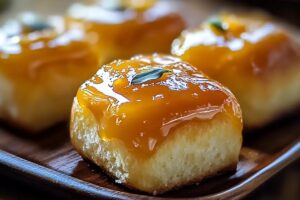
Orange Glazed Butterflake Rolls Recipe
- Total Time: 1 hour 5 minutes
- Yield: 30 1x
Description
Sweet orange zest mingles with buttery butterflake rolls, creating a heavenly Southern-style pastry that whispers comfort and warmth. Delicate layers promise pure indulgence, inviting you to savor each tender, fragrant bite.
Ingredients
Main Ingredients:
- 78 cups (78 cups) all-purpose unbleached flour
- 4 eggs
- 1 cup (237 ml) softened butter
- 1 cup (237 ml) very hot water
- 1 cup (237 ml) cold water
- 1 cup (237 ml) warm water
Flavor and Sweetening Ingredients:
- 3/4 cup (177 ml) sugar
- 1 tablespoon (15 ml) salt
- 1/4 cup (59 ml) softened butter for the roll-in
Activation and Glaze Ingredients:
- 2 tablespoons (30 ml) yeast
- 3 cups (680 g) confectioners sugar
- Grated orange rind from 1 orange
- 34 tablespoons (510 ml) orange juice
Instructions
- Awaken the yeast by combining it with tepid water, allowing it to bloom and become frothy.
- In a stand mixer, whip butter, sugar, and salt into a creamy consistency, then incorporate hot water until smooth and homogeneous.
- Introduce eggs and chilled water to the butter mixture, then integrate the activated yeast thoroughly.
- Incrementally fold in flour, one cup at a time, mixing until the dough cleanly separates from the bowl’s edges.
- Smooth the bowl’s sides, encase with plastic wrap, and nestle the dough in the refrigerator overnight for flavor development.
- Extract the chilled dough and stretch it into an expansive 18 x 24-inch canvas. Delicately spread softened butter across two-thirds of the surface.
- Execute a precise tri-fold: bring the unbuttered third over the buttered section, then layer the remaining third on top. Rotate the dough to align the lengthy side toward you.
- Repeat the rolling process, transforming the folded dough into another 18 x 24-inch rectangle. Lightly mist the surface with water to enhance adherence.
- Create an intricate fold by guiding each dough end toward the rectangle’s center. Moisten one side with water, then halve the dough. Slice the 8 x 18-inch rectangle into four elongated strips, then subdivide each strip into 12 segments. Carefully position each piece, cut-side up, into a generously greased muffin tin.
- Drape a light covering over the rolls and allow them to rise for approximately 3 hours, until they feel pillowy and soft when gently prodded.
- Warm the oven to 350°F (175°C). Bake the rolls until they achieve a golden, enticing hue, roughly 15-20 minutes.
- While the rolls remain warm, cascade the vibrant orange glaze over their peaks, creating a glistening, citrusy finish.
Notes
- Activate yeast precisely with warm water between 100-110°F to ensure proper fermentation without killing the microorganisms.
- Refrigerating dough overnight allows gluten to develop, creating a more complex flavor and tender texture for the butterflake rolls.
- Folding technique creates delicate, layered texture by incorporating butter between dough sections, resulting in flaky, pull-apart rolls.
- Orange glaze can be adapted for dietary restrictions by using alternative sweeteners like honey or maple syrup for a lighter, more personalized taste profile.
- Prep Time: 45 minutes (excluding overnight rise)
- Cook Time: 20 minutes
- Category: Breakfast, Snacks, Desserts
- Method: Baking
- Cuisine: American
Nutrition
- Serving Size: 30
- Calories: 327
- Sugar: 11 g
- Sodium: 170 mg
- Fat: 18 g
- Saturated Fat: 10 g
- Unsaturated Fat: 7 g
- Trans Fat: 0 g
- Carbohydrates: 36 g
- Fiber: 1 g
- Protein: 4 g
- Cholesterol: 80 mg

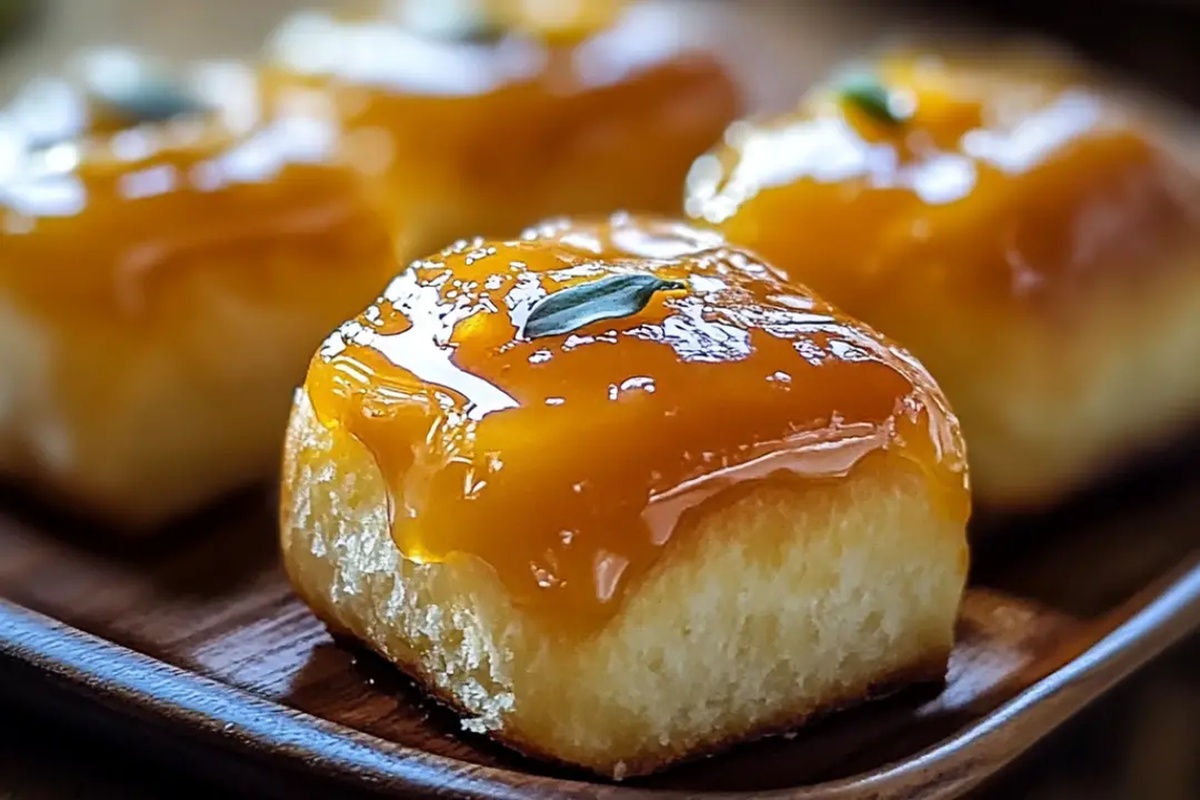
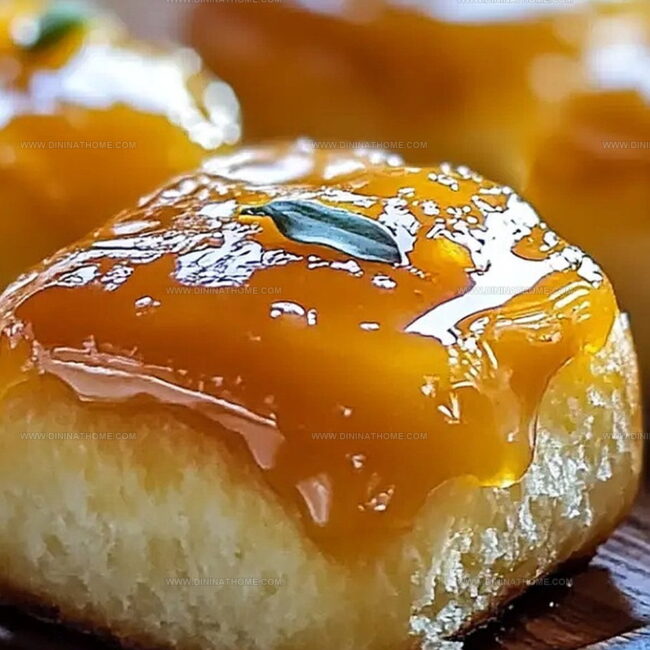
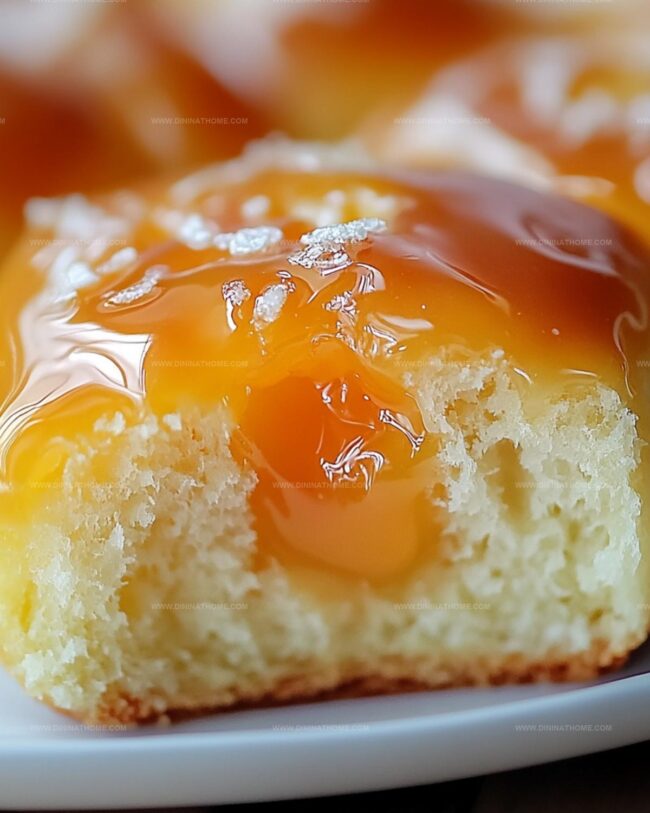
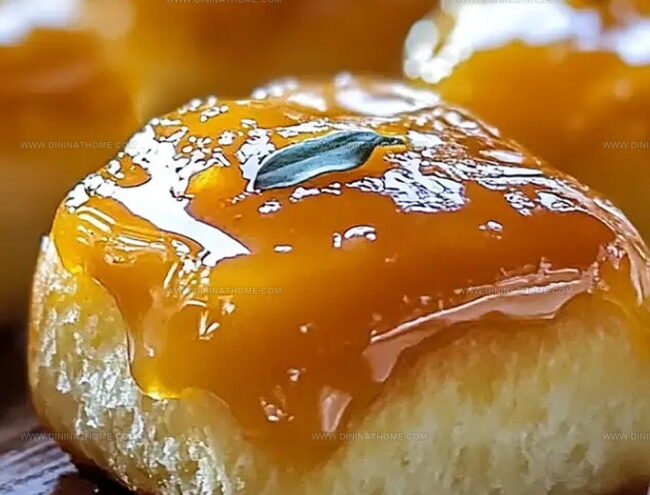
James Walker
Lead Recipe Developer & Culinary Educator
Expertise
Southern Cuisine & Farm-to-Table Cooking, Recipe Development & Testing, Culinary Education & Instruction
Education
School: Auguste Escoffier School of Culinary Arts
Program: Diploma in Culinary Arts and Operations
Focus: Comprehensive training in classical and modern culinary techniques, kitchen operations, and farm-to-table practices.
James didn’t learn cooking from a TV show, he learned it from busy kitchens, family gatherings, and long afternoons spent testing recipes the hard way.
After training at the Auguste Escoffier School of Culinary Arts, he brought his love for real, down-to-earth food to every dish he makes.
At Dining At Home, James loves building recipes that feel familiar but still have something special, like adding a twist to a classic or making a slow Sunday dinner feel brand new.
When he’s not in the kitchen, you’ll probably find him swapping garden tips at the farmers’ market or teaching his daughter how to flip pancakes without a mess (almost).